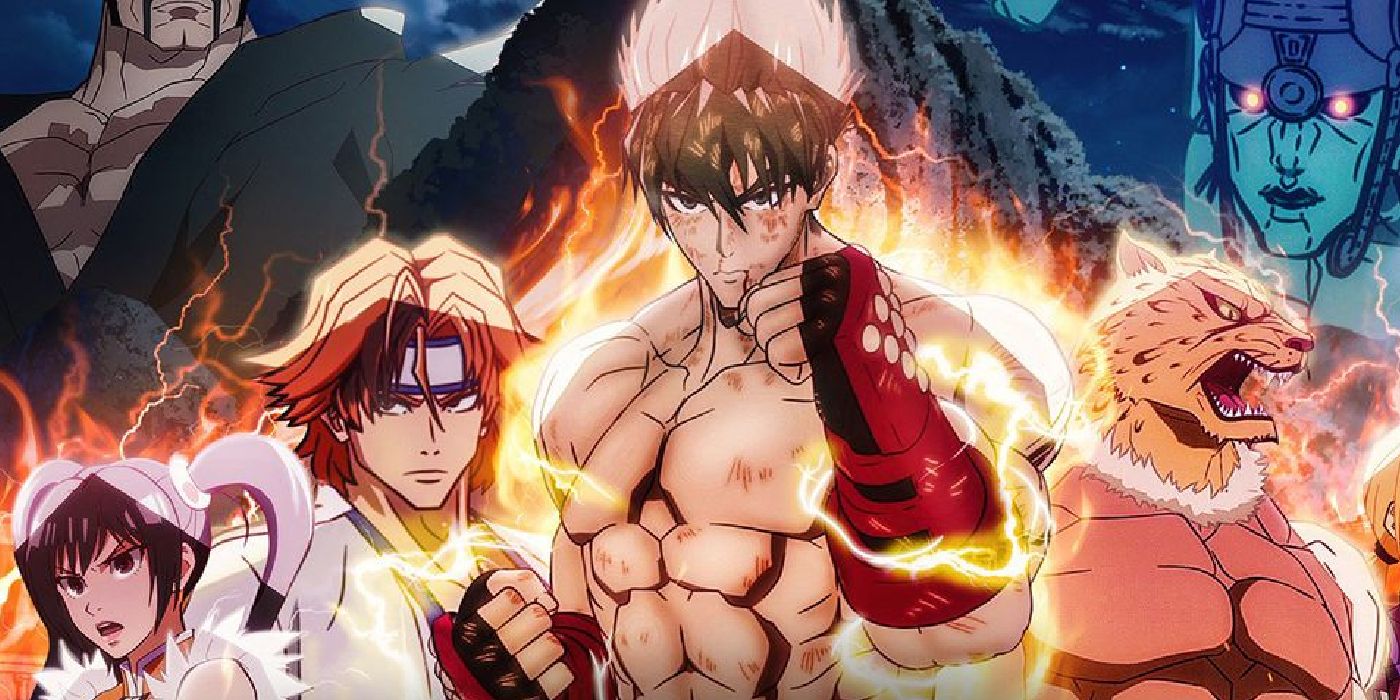Warning: Contains SPOILERS for the Tekken: Bloodline animated series.After two previous attempts, Netflix’s Tekken: Bloodline finally solves the video game franchise’s questionable history of anime adaptations by offering a crisply illustrated story that should be attractive to both fans and critics of the game.
Yoshikazu Miyao’s Tekken: Bloodline, based on the Tekken 3 video game, follows the story of Jin Kazama, the son of Kazuya Mishima and Jun Kazama, and grandson of Heihachi Mishima. The anime opens with Jin living and training with his Mom in a quiet location. He is already a good fighter, though his mother insists that he learn to master his rage. That rage was the very thing that unleashed the Devil Gene in his father which, unbeknownst to Jin, he also possesses. As a result of that legacy, Jin is a target of the dark spirit Ogre. When Ogre comes looking for Jin, his mother takes on the monster, but ultimately is forced to sacrifice her life to save him. Orphaned, Jin follows his Mom’s last request and finds his grandfather, Heihachi, who reluctantly agrees to train him in the Mishima style so that he can fight Ogre and avenge his mother’s death
For fans of the Tekken video game, Bloodline is the anime they have been waiting for since when it was first announced, in the 1990s, that the game was getting an animated adaptation. This is mostly due to the fact that Miyao and his creative team not only focus the “superstructure” of the anime fully in the video game plot environment but also take “poetic licenses” that make sense in Tekken mythology. For instance, the video game storyline does not provide much information about Jun Kazama or Jin Kazama as a child, so the creators had the freedom to develop these plot points. The choices that they made, however, fit nicely with those parts of Jun and Jin Kazama’s story that is told in the game. It also gives due acknowledgment of the central theme running through the video game — the internal and eternal struggle of the males of Tekken’s Mishima clan. But it doesn’t overemphasize the mythology. Even non-fans of the game will enjoy this series without needing to pick up a controller and boot up a PlayStation or Xbox.
How Does Tekken: Bloodline Compare With The Other Tekken Anime?
The result is much different from the other two Tekken anime productions. The first attempt, namely Kunihisa Sugishima’s 1997 animated film, Tekken: The Motion Picture, focuses on Jin’s father Kazuya, but has almost no connection to the in-game storyline, and seems more focused on product advertisement than a fully developed story based on a content-rich video game. The second attempt was Yoichi Mori’s 2011 3D CGI animated movie, Tekken: Blood Vengeance. It tells an even more convoluted, and by Tekken video game canon, a more heretical story where Kazuya and his son Jin operate two rival companies vying for control of the special “M-Gene” which is present in the student Shin Kamiya, a character who has never been seen or mentioned in the Tekken universe before.
With a franchise as big as Tekken, it is understandable that not all the adaptations will “fit” the original storyline. That is, it’s easy to go “out of character” especially when the original creators are not involved in the project. In this case that would be Katsuhiro Harada the director of the franchise since its debut in 1994. Indeed, Harada has publicly criticized works that do not represent true Tekken mythology. Harada was not involved in the first two anime adaptations but was the producer of Tekken: Bloodlines. His involvement clearly seems to have righted the course of the video game’s anime content.
Tekken: Bloodline is available for viewing on Netflix.
